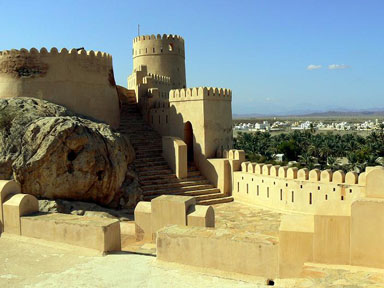



Morocco
Morocco is a small country lying in the northwest of Africa. It is surrounded byAlgeria on the east, the Strait of Gibraltar on the north, and the Atlantic ocean. It is slightly bigger in size than California. Its full Arabic name is Al-Mamlaka al-Maghribiya (المملكة المغربية) meaning “the WesternKingdom.”
Political History
The area of Morocco has been inhabited since at least 8000 BC and has undergone a variety of cultural and political transformations throughout its history. Much of the area was originally inhabited by a group of people referred to as the Berbers. In the late Classical period, Phoenician trading colonies arrived and brought the area under the rule of the Roman Empire. The Roman Empire eventually fell during the fifth century and this part of Northern Africa was taken over by the Vandals, the Visigoths (both eastern Germanic tribes) and the Byzantine Greeks. However, much of the mountainous areas of Morocco were still controlled by the Berbers.
The Arabs invaded Northern Africa in 670 AD and eventually took over the area occupied by the Berbers after a century of fighting. Power in Morocco switched hands between a succession of Arab dynasties after that, and eventually the Berber people adopted Islamic culture and religion and formed their own dynasty that took over and once again ruled the country. This group was then overthrown by another Arab dynasty (the Saadi dynasty) who took over in the 1500s. During the mid-1600s, power was again shifted and a Muslim dynasty took over Morocco. Over the course of the 18 and 1900s, Spain,Germany and France have all had interest in the area. However, in 1912, Morocco signed a treaty with France putting it under French protection. This was unsatisfactory to many in
Morocco and they eventually won their independence from France in 1956. Today Morocco is under rule by a constitutional monarchy. It is currently a non-NATO ally and has free trade agreements with the US and the European Union. Interestingly, the Moroccan-American Treaty of Friendship, signed by theUS and Morocco in 1786 is still in effect today.
People and Culture
With a population of over 33 million people, Morocco is the fourth most populated Arab country. The official language in Morocco is classical Arabic but the regional dialect is Moroccan Arabic, or Darija. While Arabic is the official language, a few others also exist in the country: Berber (a type of Afro-Asiatic language) is spoken in three dialects by about 40% of the population; French is the unofficial second language of Morocco and is often used in education and business. A portion of the population in the north also speaks Spanish and the younger generations are currently being taught English in school. Education is free and required, but this is not always enforced and the country’s illiteracy rate has stayed around 50%.
The largest ethnic groups include people of Berber descent (about three quarters of the population) and people of Arabic descent. There is small Jewish population that has dwindled over the years and some French and Spanish people have also moved there. Morocco is a Muslim country, but other religions practiced by the population include Christianity and Judaism.
Food in Morocco is very diverse due to the different cultural influences. Couscous (a type of grain) is a common dish along with chicken. Other dishes that are popular include pastille, a dish made with pigeon or chicken stuffed in a type of phyllo pastry. Another is a type of stew called tajine with vegetables or meat that is named after the type of pot it is cooked in. The tajine pot is made of heavy clay with a flat, circular bottom and a cone shaped dome that sits inside of the bottom while it is cooking. The cover is dome-shaped so the condensation returns to the bottom during cooking. Below is a photo of a potter making tajines.

While many Arabic countries drink coffee, a popular drink in Morocco is green tea with mint and drinking it with friends and family is an important part of the day.
Other points of interest
Some of the main industries in Morocco are mining phosphates and tourism. However, the second largest source of income comes from Moroccans living and working abroad who transfer money back to their relatives. It is also one of the world’s largest producers of cannabis.
Sources: wikipedia, www.cia.gov



 Posted by zarabiclass
Posted by zarabiclass  Shi’a is taken from the phrase شيعة علي meaning “follower” or “faction of Ali”. In 632 the Islamic prophet
Shi’a is taken from the phrase شيعة علي meaning “follower” or “faction of Ali”. In 632 the Islamic prophet 




